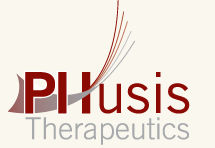Request Demo
Last update 08 May 2025
PLEK
Last update 08 May 2025
Basic Info
Synonyms P47, Platelet 47 kDa protein, pleckstrin + [1] |
Introduction Major protein kinase C substrate of platelets. |
Related
1
Drugs associated with PLEKTarget |
Mechanism PLEK inhibitors |
Active Org. |
Originator Org. |
Active Indication |
Inactive Indication- |
Drug Highest PhaseDiscovery |
First Approval Ctry. / Loc.- |
First Approval Date20 Jan 1800 |
100 Clinical Results associated with PLEK
Login to view more data
100 Translational Medicine associated with PLEK
Login to view more data
0 Patents (Medical) associated with PLEK
Login to view more data
577
Literatures (Medical) associated with PLEK01 Apr 2025·Biogerontology
Immune genes involved in synaptic plasticity during early postnatal brain development contribute to post-stroke damage in the aging male rat brain
Article
Author: Hermann, Dirk M ; Pirscoveanu, Denisa F V ; Olaru, Denissa Greta ; Ghinea, Flavia Semida ; Doeppner, Thorsten R ; Popa-Wagner, Aurel
01 Mar 2025·CNS Neuroscience & Therapeutics
Proteomic Analyses of Clots Identify Stroke Etiologies in Patients Undergoing Endovascular Therapy
Article
Author: Ko, Sang‐Bae ; Jung, Jin Woo ; Kim, Young‐Ju ; Kim, Tae Jung ; Yoon, Byung‐Woo ; Han, Dohyun
20 Dec 2024·ACS Chemical Biology
Small Molecule Modulator of the mTORC2 Pathway Discovered from a DEL Library Designed to Bind to Pleckstrin Homology Domains
Article
Author: Gonse, Arthur ; Barluenga, Sofia ; Loewith, Robbie ; Daguer, Jean-Pierre ; Winssinger, Nicolas ; Gajić, Jelena
Analysis
Perform a panoramic analysis of this field.
login
or

AI Agents Built for Biopharma Breakthroughs
Accelerate discovery. Empower decisions. Transform outcomes.
Get started for free today!
Accelerate Strategic R&D decision making with Synapse, PatSnap’s AI-powered Connected Innovation Intelligence Platform Built for Life Sciences Professionals.
Start your data trial now!
Synapse data is also accessible to external entities via APIs or data packages. Empower better decisions with the latest in pharmaceutical intelligence.
Bio
Bio Sequences Search & Analysis
Sign up for free
Chemical
Chemical Structures Search & Analysis
Sign up for free
